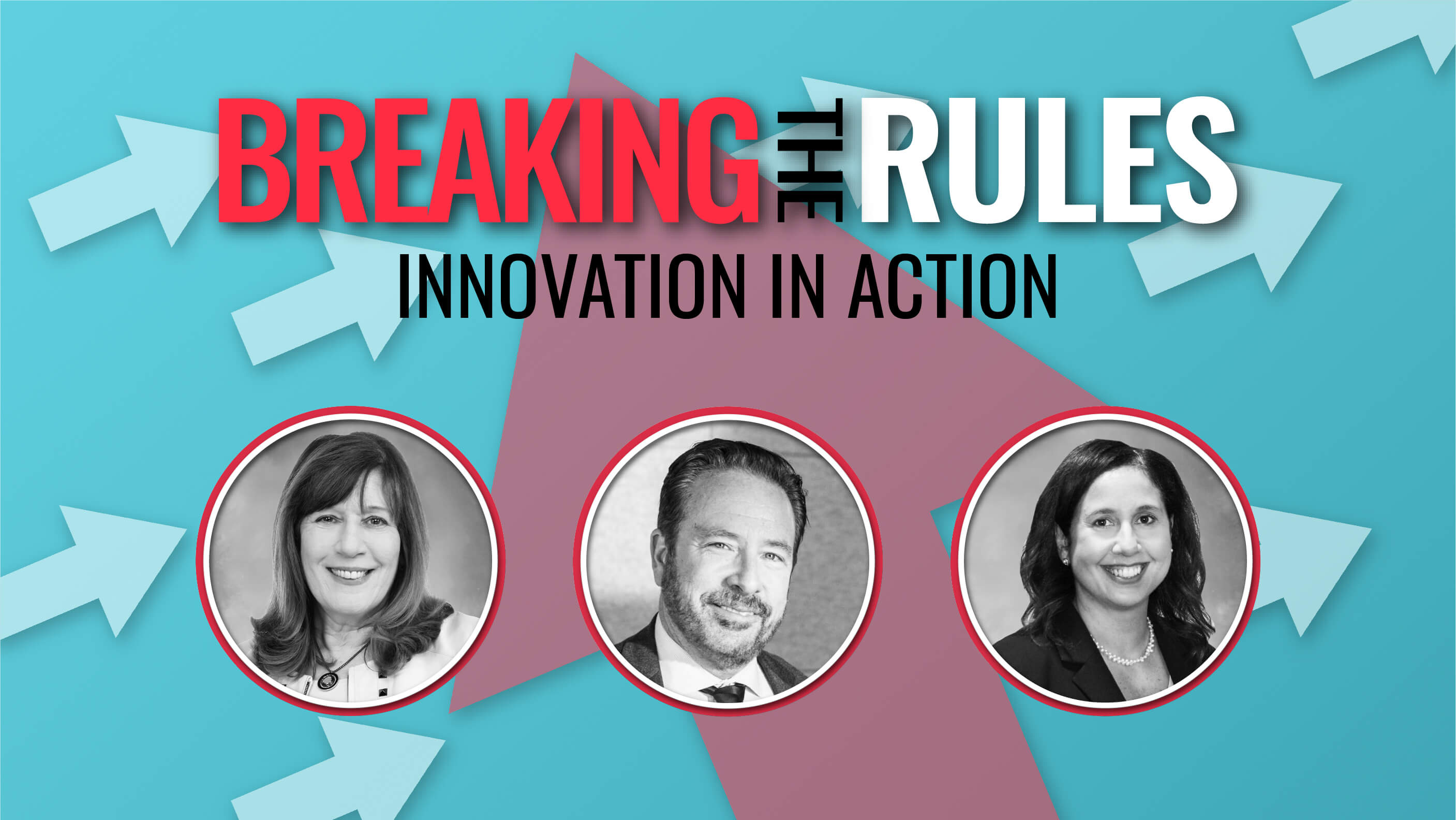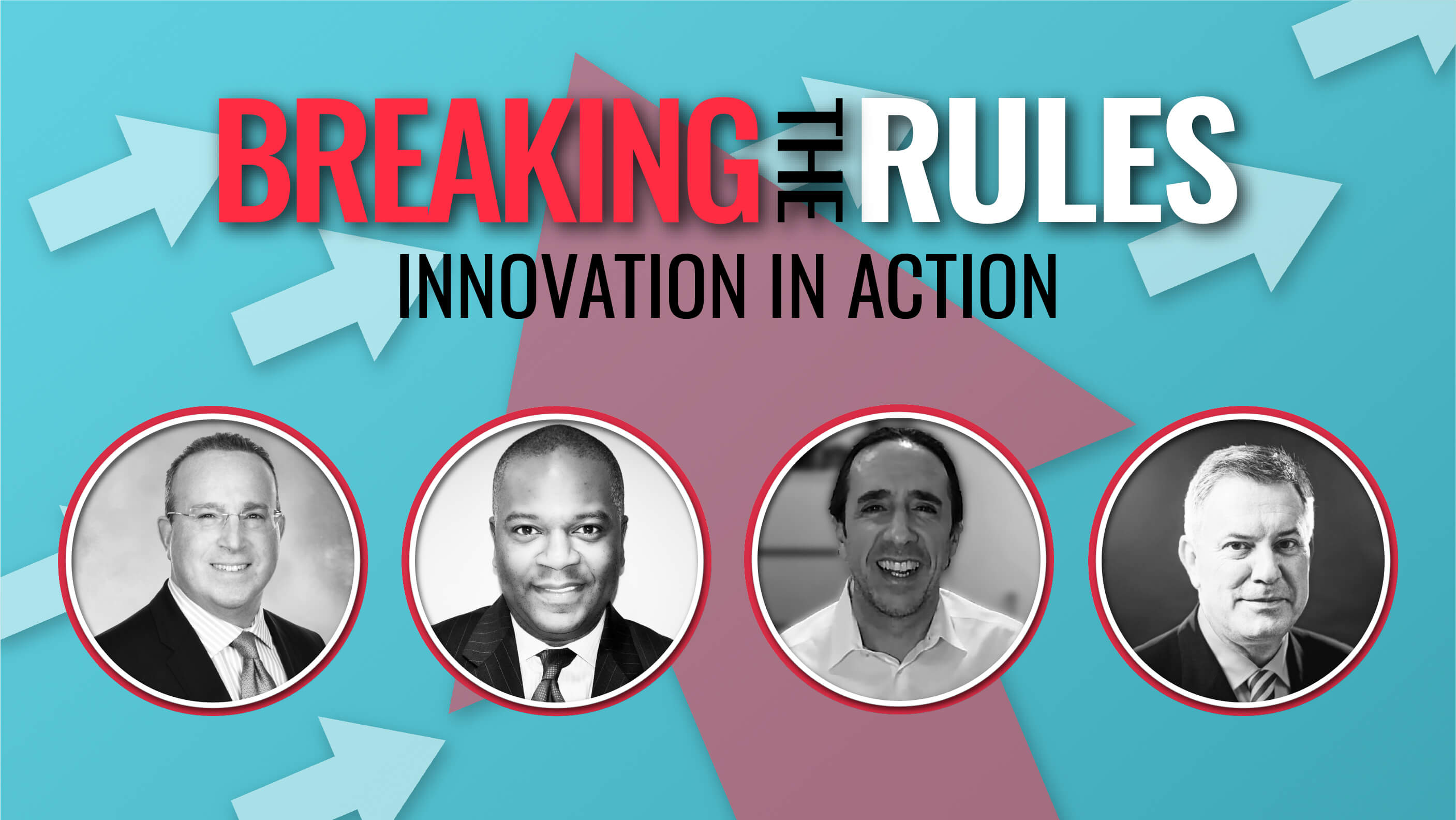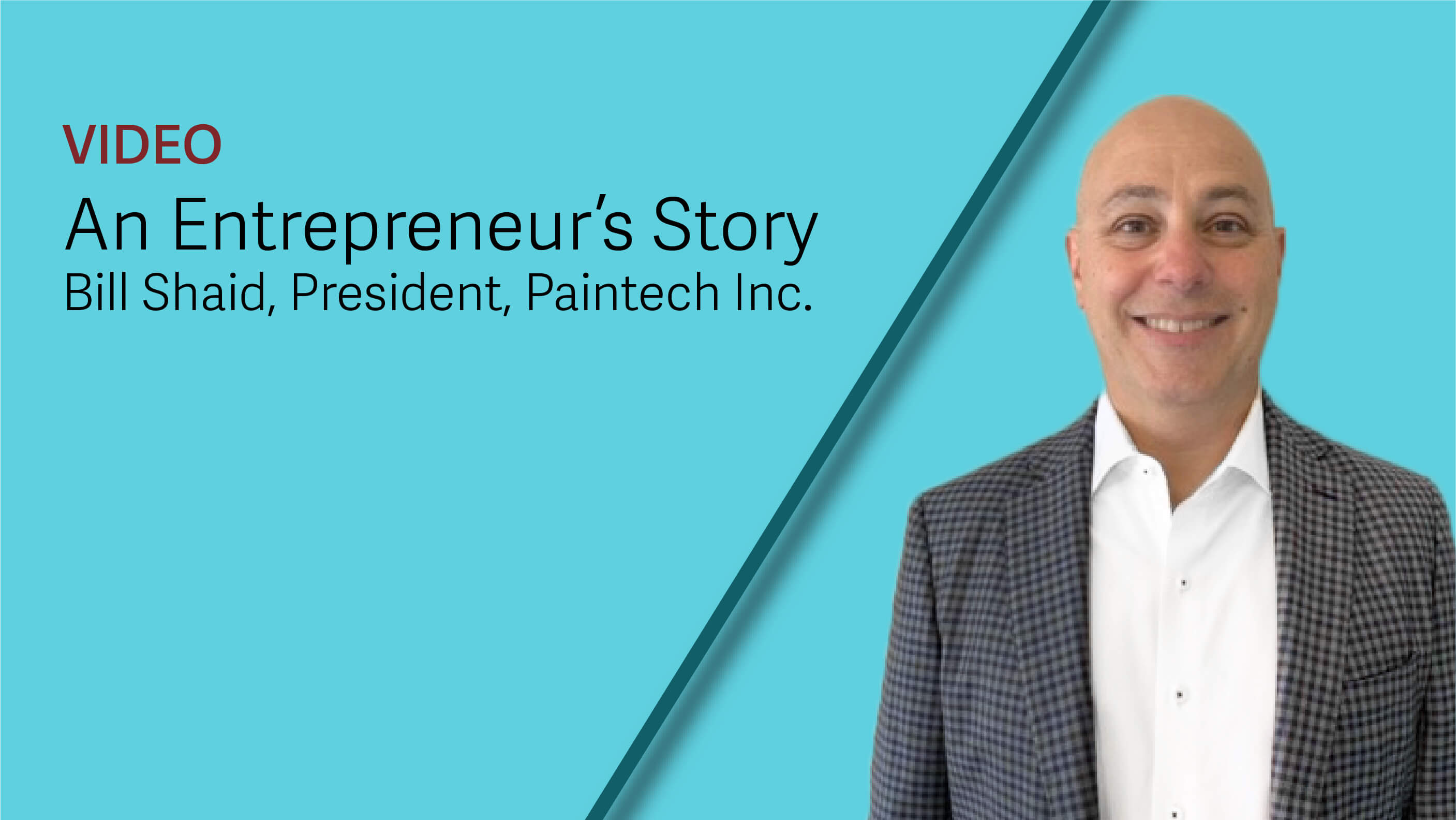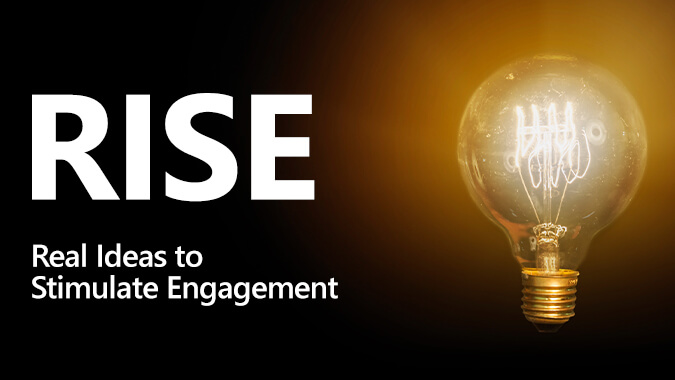Extended Question and Answer Segment with Reggie Fils-Aimé
- Published
- Dec 8, 2020
- Share
Transcript
Diane Wasser: Thank you to everyone for your time on the actual summit. Reggie was kind enough to stay back with me so that we could go through some more questions and provide it to you separately. So thank you for your time now to really listen to the rest of the questions that came through, as many of the questions that we could get to in this time. So, hey Reggie.
Reggie Fils-Aimé: Hey, how are you?
DW: Ready to go again? I'm awesome. This is one of my best days this whole month, if not way more months. So here's another question. What caused Nintendo to diverge from the typical video game system, Arms Race and come up with entirely different gaming systems?
RFA: And so first, it's important to remember that Nintendo as a 130-year old company has always been innovating. They've always been trying to do things differently to provide unique experiences. As I said during the presentation, transitioning to different types of playing cards, from there going into physical toys, from there going into electronic toys and then gaming. In more recent history, what Nintendo has been doing, I think it's important for those game enthusiasts who are part of your audience to remember a product that Nintendo had called the GameCube. So this was a product that Nintendo launched in 2000 or 2001. It was before I joined the company. And what's interesting is that that product for its day was the most technologically advanced product of its time. It was more advanced than the PlayStation 2 that was out in the market.
It was more advanced than the Machine that Microsoft launched, the original Xbox and yet that product did not succeed in the marketplace. The dominant product was the PlayStation 2. And so, I think that experience really pushed Nintendo to get back to its core roots of doing something completely different, always looking to surprise and delight consumers. I think it was seeing the results of trying to compete with other manufacturers along the same vector and seeing it not work, recommitted themselves to a path of innovation. And that's what led to the Nintendo DS and the Wii, and now the Nintendo Switch. So my personal opinion, because I wasn't part of the company at the time, I think that seeing a pure technology play not be as successful, challenged in Nintendo to get back to innovating in a unique way along unique vectors. And the company has been extremely successful pushing that path these last, roughly 25 years.
DW:Well, I can tell you that Kevin and Caroline Wasser's life was changed by the GameCube. It was the first game that we had in this household. So thank you for that.
Reggie Fils-Aimé: That's right.
DW:Okay. Next question. How do you strike a balance between supply and demand when you're working on the plan for a hot new product, like the Switch? There's three questions here, so I'll do it one at a time.
RFA:Sure. So in terms of planning your manufacturing pipeline, and this is true for any product that will have a rapid ramp-up in demand, but then also a ramping down of demand. You want to scale your manufacturing so that you're able to deliver product at an ongoing rate versus planning for either the max demand or the minimum demand. You want to try and find a place in-between. So the result of that is, especially in the consumer electronics industry, when a brand new product comes out, whether it's the latest iPhone, whether it's the latest gaming device, whether it's the latest type of innovative camera, whatever it is, you typically are going to have shortages right at that initial point, because the manufacturing is still scaling. And so that's the mental process that you go through on the production side. If you try and scale your production too fast, you actually can put yourself in a difficult financial situation, because if you're not producing at that high rate, then your equipment is going unused, or your employees are not being fully optimized in terms of their output.
It really is a delicate balance to find that optimum point that you're not disappointing consumers, because you never want to have not enough product. But you don't want to have your manufacturing output scale at such a high place that you're having to shut down plants down the path. An interesting example, if you look at the automotive industry, the automotive industry is struggling with this right now. Consumers aren't replacing cars nearly as often. And so, a lot of manufacturers in the automobile space are having to shut down factories because the demand just isn't as strong as what they built that initial production plan.
DW: Yes, I hear you that's for sure. How do you handle... You touched on it a little bit. How do you handle the messaging when there's a product scarcity?
RFA:The most important thing that I've found is to be clear that more product is coming into the marketplace that the consumer should check frequently because at least from a Nintendo perspective, we are always flowing more product out into the marketplace. And to also reinforce that a shortage is not something that a manufacturer wants to have. The manufacturer wants to be able to meet all the demand that there is. And so what you want to do is to let the consumer know that yes, the company understands their situation. We don't want them to be frustrated and we're doing everything we can to satisfy their demand.
DW: Perfect. The next question, the person that wrote it believes that going forward, in addition to fresh ideas, it's important to look at business continuity and resilience. Can you speak to the need for businesses to grow with risk management in mind?
RFA:Yeah, absolutely. Understanding organizational risk, enterprise risk is a key need in any business. And I think actually the situation that we're dealing with right now with the pandemic is a classic example. This pandemic is a situation that no one could have anticipated, but the resulting issues around having your employees have flexibility to work away from the office, that's an enterprise risk that companies have been considering. I know I was dealing with that as the leader of the North American Nintendo business. How do we create our technical infrastructure that would enable workplace flexibility and be successful? You need to think about all the different types of enterprise risks that you face given your industry, but then you need to have action plans to address it.
Companies that do this, large or small are setting themselves up for success. So managing your enterprise risk, understanding your enterprise risk, resiliency in terms of having capable backup systems and ability to continue doing your work, should you have any type of disruption in your business is critical to long-term success. So these types of risk identification and risk mitigation to me is critical no matter the size of business.
DW:Absolutely. Anybody kind of pushed that to the side, learned the lesson now with the pandemic. That's for sure. Here's a good one. Thank you to whoever who wrote it, if you're still listening. What are the top three character traits you look for in your team?
RFA:Yeah. So, let me put aside for a moment, things like functional expertise and being best in class, whether you're a member of my finance team or my marketing team. Let's take that as a given. So, the other traits that I would highlight would be first integrity, right? When you're dealing with tough issues, you want to know that the person at your side is approaching things from the highest integrity possible. So that is a key trait as I built out my teams. The next one would be, what I would call comradery, meaning we're all in this together, right? You don't want a team member who is taking shots at other members of the team. You really want a level of cohesion and camaraderie. That is important to any successful team.
Then the third point I would highlight is diversity. And when I say diversity, I mean it in its broadest sense possible. So, diversity of background, diversity of perspective, certainly ethnic diversity, orientation, all of that diversity to me is critical. And the reason for that is we bring our ideas and experiences into any conversation or into any decision. And I personally believe that I got to better decisions by having more voices in the room, different experiences in the room, perspectives that were at times fundamentally different than mine. And so that diversity of perspective and thought I think is critically important. And for me as an executive, I was always driving to get as many diverse voices into the room in order to drive the best decision possible.
DW: The next question kind of builds off the first one as far as the traits, the integrity, the comradery, and the diversity. How did you handle creating a group that was empowered and able to break the rules while the rest of the business needed to operate?
RFA:So what's interesting here for me in the organizations that I've run, when we've had a specific project, a specific innovation project, I made sure that those individuals had the time, the freedom, the capability to do the work. And so at times that meant taking some things off their plate in order to empower them to do the key innovation project. In the presentation, I gave the example I used with Panda Express. That was an internal team that created that project. And so for three or four members, the key members of that team, I actually moved projects away so that they could focus on the key innovation task at hand, but they were supported by other members of the team, again, driving that diversity of opinion and diversity of point of view.
So I find that you have to be nimble in how you approach innovation within a company or innovation project. Sometimes you may not need to move resources or projects off of an individual's plate. It really depends on the situation. I think the key point is that as a leader, you need to make sure you're having the direct conversations to understand a person's capability, a person's ability to focus on the innovation project. And if that means making some changes, moving projects around, you have to be willing to do that.
DW: Yeah, that's always hard. A lot of times people don't want to give anything up, but you can see that it's for the greater good.
RFA:Absolutely. And as a leader, you have to have that conversation. It needs to be straightforward and direct, and the employee needs to understand that because you're taking something off their plate, it's not a negative. It actually is being done to help them.
DW: I agree. I know that during this pandemic there've been a lot of startup companies and this one might have come from somebody who's thinking of doing that or has. What are the principles and actions that are most relevant for startups?
RFA:I think all of the principles that I laid out are applicable, the ones that I would highlight. First, you need to make sure you understand the market that you're looking to disrupt, and that understanding needs to be deep. It needs to be complete. I've spent a lot of time with entrepreneurs, people doing startups, and on more than one occasion, I've had to have a tough conversation around depth of understanding of the market that they're looking to disrupt and therefore the chance of success of the initiative that they're putting in place. I was working with one entrepreneur, and I just didn't feel that the idea really was well-grounded enough. And I counseled them to look at some different factors and lo and behold, this entrepreneur ended up coming back with a different approach, a different take that has been successful out in the marketplace.
So first, make sure you really do understand the marketplace and understand what it is you're trying to disrupt. And then the second principle that I would highlight is be prepared to fail forward, right? Not every idea is going to work and you need to be prepared to take the best of what you've done and reapply it quickly and failing forward. So many of the big innovations that people talk about today you need to realize that the first few iterations weren't what you see today, they had to fail forward and iterate the product in order to get it to where it is now being successfully embraced in the marketplace.
DW:Sounds like my golf game right now. Next question. What advice would you give seasoned entrepreneurs to pivot for success through the end of this pandemic?
RFA:I'm on that front, this pandemic really has been... People in the industry call it a black hat event, meaning something that was unanticipated and truly disruptive from so many ways, so many vectors. I think moving forward, there's going to be opportunities as consumers look to reengage. By our nature, we are social animals. We like to be together. We like to spend time together. And this pandemic has been so disruptive in... Now we're in our own little pods. We're not going to restaurants and doing the things that we like to do that are social in nature. So I believe that there's going to be a rapid pace of innovation, a rapid pace of new ideas that focus on the social fabric that is inherent to what we are as a species and looking to leverage that as people find ways to spend more and more time together.
DW:I agree, very refreshing. True. We have to be creative. What are you in particular doing to prepare for 2021, along those same lines?
RFA:For me, in retirement, I get to do things that are fun for me. So for example, public speaking is something I enjoy. I like the interaction. And so for me, in 2021, I look forward to actually being back on the road. I look forward to being back out, engaging with people directly. I'm on the board of three public companies. And we haven't had an in-person meeting all year. I look forward to engaging with my fellow board members. So just as I answered that previous question, I look forward to the social nature of what I've been doing in retirement and doing more of it once the pandemic is under control.
DW:I agree, 100%. And our last question, thank you to whoever sent it in earlier, how do we generate leads in this period of uncertainty? This is something that I've been pondering since March.
RFA:I think in this period right now, people need to really tune up their digital skills. There's a variety of digital tools out there. Some of these are specific to your own particular industry, but you need to be tuning up your digital skills for lead generation, connecting, finding ways to engage with people that you don't know and now you're having to engage with them through a screen. But this is a series of skills that will help you in the future when you're able to go back to your more, let me say standard way of lead generation. The digital generation of leads will always be there as an additional tool set for you. So, I think over the next number of months until the pandemic is truly under total control, continuing to tune up your digital skills, learning new things through webinars, this this type of engagement, finding ways to improve yourself and to connect with others digitally, I think is the key skill to be leveraging right now.
DW: Agree. Thank you, Reggie. And thank you everyone who listened to this supplement, we appreciate your time and I hope everybody stays safe and happy.
Contact EisnerAmper
If you have any questions, we'd like to hear from you.
Receive the latest business insights, analysis, and perspectives from EisnerAmper professionals.









